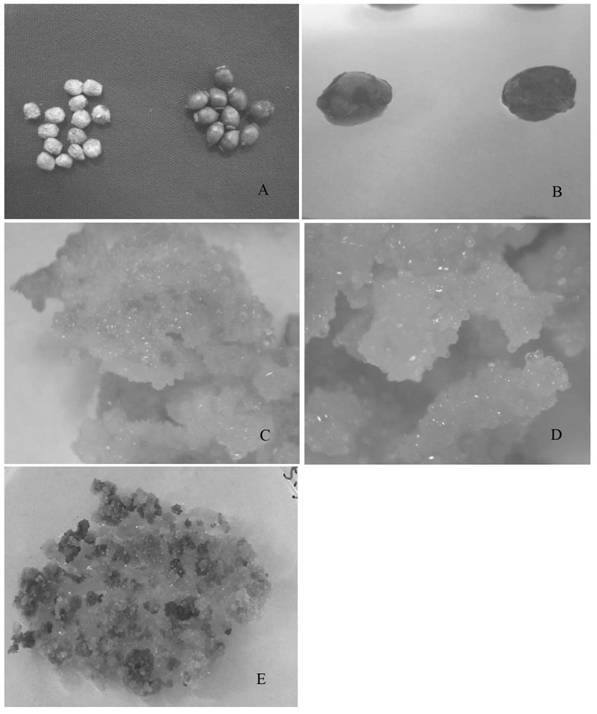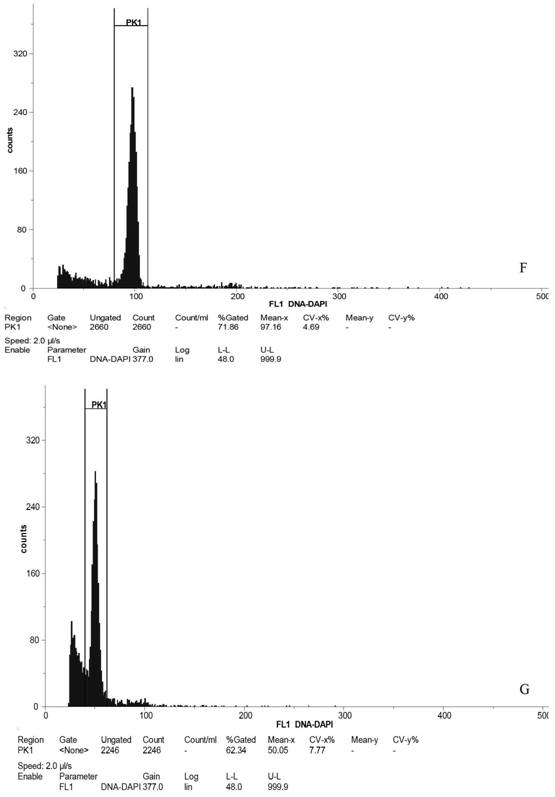Method for inducing haploid endosperm callus tissues by using ripe taxales chinensis var.mairei endosperms
A technology of callus and mature embryo, which is applied in the field of haploid endosperm callus induced by mature endosperm of Taxus chinensis, and achieves the effects of saving water resources, low pollution rate and simple pretreatment
- Summary
- Abstract
- Description
- Claims
- Application Information
AI Technical Summary
Problems solved by technology
Method used
Image
Examples
Embodiment 1
[0029] (1) Stripping of seed embryos: Collect the seeds of the southern yew in the current year, use mechanical and manual methods to break the shell, and peel the seeds from the outer testa;
[0030] (2) Disinfection of explants: first put the seeds with the outer testa removed into a sterile container, disinfect them with 70% alcohol for 90 seconds and 0.1% mercury chloride for 12 minutes in an ultra-clean workbench, and rinse them with sterile water for 5 times Reserve later, soak the seeds for about 5 minutes each time when cleaning.
[0031] (3) Pretreatment of seeds: after the surface disinfection treatment of step (2), the seeds with the outer testa removed are sealed and soaked in sterile distilled water at room temperature for 1-3 days.
[0032] (4) Separation of endosperm tissue: the endosperm tissue of the seeds is stripped under sterile conditions, and the other parts are discarded;
[0033] (5) Induction of endosperm callus: Inoculate the endosperm tissue onto th...
PUM
 Login to View More
Login to View More Abstract
Description
Claims
Application Information
 Login to View More
Login to View More - R&D
- Intellectual Property
- Life Sciences
- Materials
- Tech Scout
- Unparalleled Data Quality
- Higher Quality Content
- 60% Fewer Hallucinations
Browse by: Latest US Patents, China's latest patents, Technical Efficacy Thesaurus, Application Domain, Technology Topic, Popular Technical Reports.
© 2025 PatSnap. All rights reserved.Legal|Privacy policy|Modern Slavery Act Transparency Statement|Sitemap|About US| Contact US: help@patsnap.com


